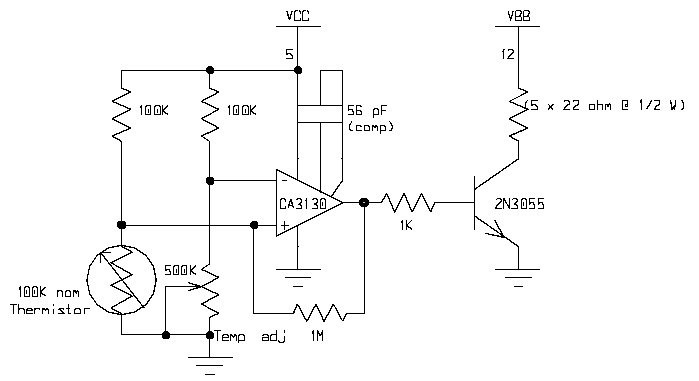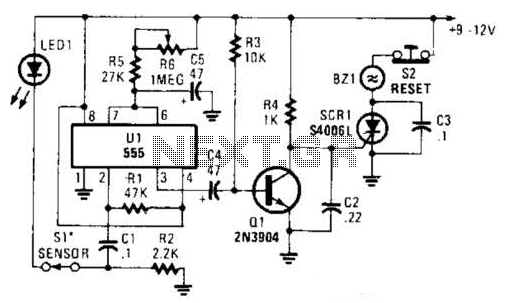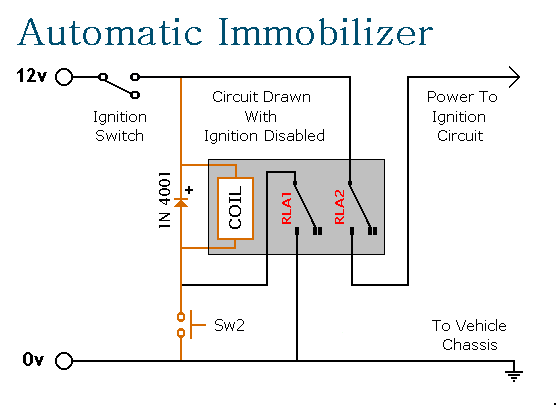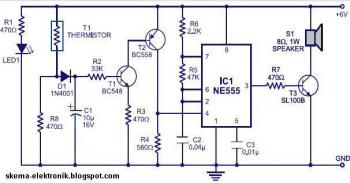
The Aurora Alarm

To increase the chances of observing the northern lights, the limitations of current aurora prediction methods can be circumvented by directly sensing the light emitted by the aurora. The Aurora Alarm is a device designed to achieve this goal through the integration of a narrowband optical filter, a photomultiplier tube detector, and a versatile microprocessor system for high voltage control and alarm activation. It boasts a wide dynamic range, adjustable alarm levels, serial interfacing with a PC or a straightforward connection to an alarm system, remote programmability, single-supply operation, and a built-in heater for cold weather functionality. A prototype featuring a compact printed circuit board design and essential software routines demonstrates effective performance with numerous potential applications. The successful development of the Aurora Alarm is the result of collaborative efforts from various individuals. Acknowledgments are extended to project advisor Professor Carlton Cross for guidance throughout the project, as well as Professors Ralph Stirling, Don Riley, and Ryan Mowat, Jim Forsyth from Technical Support Services, and fellow student Andrew Depaula for their valuable assistance during the mechanical design and construction of the prototype. Gratitude is also expressed to Physics Professors Claude Barnett and Gordon Johnson for their support with optics inquiries and lab space, and to Robert Batten for his tutoring in Mentor Graphics. Special thanks are given to Ray Muller at Hamamatsu Corp. for the generous donation of photomultiplier tubes and high voltage power supplies utilized in this project, along with Bill Grenier at the Andover Corp. and Calvin Grandy at Omega Optical Inc. for their contributions of optical filters. The captivating beauty of the aurora attracts many, especially those residing in northern latitudes where this phenomenon is referred to as the northern lights. In regions where auroral displays are infrequent, such as most parts of the United States, observing an aurora typically requires either a significant time investment or a reliable prediction method. At the latitude of Walla Walla College, auroral displays are more common than perceived, yet they often occur when individuals are asleep, indoors, or in light-polluted urban areas. There is likely considerable interest in observing the aurora if the public were informed about when to look for it. Current prediction methods depend on the correlation between solar activity and magnetic disturbances on Earth, which are closely associated with auroral occurrences. For instance, a significant solar flare is frequently followed by enhanced auroral displays within a few days. Variations in the strength and direction of the Earth's magnetic field, referred to as "magnetic storms," also serve as reliable predictors of auroral activity. Such solar and geophysical data are readily accessible via the Internet and shortwave radio; for example, Today's Space Weather, a service provided by the Space Environment Center, offers relevant information. Although predictions based on these indicators can improve the likelihood of witnessing an aurora, they are still prone to a high failure rate. Additionally, consistently monitoring this information can be time-consuming, especially if a suitable dark-sky location is not nearby, resulting in wasted efforts chasing false alarms. By detecting the light emitted by the aurora directly, the Aurora Alarm effectively circumvents the limitations and uncertainties associated with traditional prediction methods. A reference in the amateur literature has reported successful outcomes with this approach, which included an entirely analog design.
The Aurora Alarm circuit consists of several key components that work in unison to achieve its objective. The heart of the system is the photomultiplier tube (PMT), which is sensitive to low levels of light and can detect the faint glow of the aurora. The PMT is coupled with a narrowband optical filter that isolates the specific wavelengths of light emitted by the aurora, enhancing the signal-to-noise ratio and improving detection accuracy. The output of the PMT is then fed into a microprocessor, which processes the signal and determines whether the detected light intensity exceeds a predefined threshold.
The microprocessor is programmed to allow for flexible alarm settings, enabling users to customize the sensitivity of the device according to their preferences. It can communicate with a PC via a serial interface, allowing for remote programming and configuration. This feature enhances the user experience, as adjustments can be made without physical access to the device.
Power management is crucial for the Aurora Alarm, especially for outdoor applications in cold weather. The device operates on a single supply voltage, simplifying its power requirements and making it suitable for battery operation. An integrated heater ensures that the device remains functional in low-temperature environments, preventing condensation on the optical components that could impede performance.
The compact printed circuit board (PCB) design minimizes the overall footprint of the device, making it portable and easy to deploy in various locations. The core software routines are designed for efficiency, enabling quick response times to changes in light levels and ensuring that alarms are triggered promptly when auroral activity is detected.
Overall, the Aurora Alarm represents a significant advancement in the field of aurora detection, providing a reliable alternative to traditional prediction methods and offering enthusiasts and researchers alike the opportunity to experience the beauty of the northern lights with greater certainty.To increase one`s chances of seeing the northern lights, the uncertainties of existing aurora prediction methods can be bypassed by sensing the light from the aurora directly. The Aurora Alarm is a device which accomplishes this objective through the use of a narrowband optical filter, a photomultiplier tube detector, and a flexible microprocessor system for high voltage control and alarm determination.
It features a wide dynamic range, flexible alarm levels, serial interfacing to a PC or simplified direct hookup to an alarm, remote programmability, single-supply operation, and a built-in heater for operation in cold weather. A prototype incorporating a compact printed circuit board design and core software routines shows good performance with numerous possibilities for future applications.
The successful completion of the Aurora Alarm reflects the contributions of many people. I would like to thank my project advisor, Professor Carlton Cross, for his guidance in every phase of this project. During the mechanical design and construction of the prototype, the practical suggestions and assistance provided by Professors Ralph Stirling, Don Riley, and Ryan Mowat, Jim Forsyth at Technical Support Services, and fellow student Andrew Depaula saved me countless hours.
I also wish to thank Physics Professors Claude Barnett and Gordon Johnson for their willingness to answer my optics questions and provide lab space, and Robert Batten for his Mentor Graphics tutoring. A special thanks goes to Ray Muller at Hamamatsu Corp. for the generous donation of the photomultiplier tubes and high voltage power supplies used in this project.
I am also indebted to Bill Grenier at the Andover Corp. and Calvin Grandy at Omega Optical Inc. for their donation of the optical filters. Without their support, this project would not have been possible. The beauty and power of the aurora capture the interest of many people, particularly those living at northerly latitudes where the phenomenon is known as the northern lights. Where auroral displays are less frequent, as they are in most areas of the US, it becomes very difficult to observe an aurora without either a large investment of time or some means of prediction (see Figure 1 ).
At the latitude of Walla Walla College, auroral displays are not as rare as most people think, but they do occur while most people are asleep, indoors, or under light-polluted city skies. It is likely that there would be considerable popular interest in observing the aurora if people knew when to look.
Current prediction techniques rely on the link between solar activity and magnetic disturbances on earth, which are closely tied to the occurrence of the aurora. For example, a large solar flare is often followed within two or three days by enhanced auroral displays.
Fluctuations in the strength and direction of the earth`s magnetic field (so-called "magnetic storms") are also good predictors of auroral activity. These and other solar and geophysical data are widely available over the Internet and shortwave radio; Today`s Space Weather, a service of the Space Environment Center, is a good example.
While predictions based on such indicators increase one`s chances of observing an aurora, they still suffer a high failure rate. Furthermore, it becomes very time-consuming to follow this information on a daily basis, and if a dark-sky site is not located nearby, considerable time may be spent chasing down false alarms.
By detecting the light of the aurora directly, it is possible to bypass the shortcomings and uncertainties of other prediction methods. A single reference in the amateur literature1 reported successful results with this method and included an all-analog design
🔗 External reference
The Aurora Alarm circuit consists of several key components that work in unison to achieve its objective. The heart of the system is the photomultiplier tube (PMT), which is sensitive to low levels of light and can detect the faint glow of the aurora. The PMT is coupled with a narrowband optical filter that isolates the specific wavelengths of light emitted by the aurora, enhancing the signal-to-noise ratio and improving detection accuracy. The output of the PMT is then fed into a microprocessor, which processes the signal and determines whether the detected light intensity exceeds a predefined threshold.
The microprocessor is programmed to allow for flexible alarm settings, enabling users to customize the sensitivity of the device according to their preferences. It can communicate with a PC via a serial interface, allowing for remote programming and configuration. This feature enhances the user experience, as adjustments can be made without physical access to the device.
Power management is crucial for the Aurora Alarm, especially for outdoor applications in cold weather. The device operates on a single supply voltage, simplifying its power requirements and making it suitable for battery operation. An integrated heater ensures that the device remains functional in low-temperature environments, preventing condensation on the optical components that could impede performance.
The compact printed circuit board (PCB) design minimizes the overall footprint of the device, making it portable and easy to deploy in various locations. The core software routines are designed for efficiency, enabling quick response times to changes in light levels and ensuring that alarms are triggered promptly when auroral activity is detected.
Overall, the Aurora Alarm represents a significant advancement in the field of aurora detection, providing a reliable alternative to traditional prediction methods and offering enthusiasts and researchers alike the opportunity to experience the beauty of the northern lights with greater certainty.To increase one`s chances of seeing the northern lights, the uncertainties of existing aurora prediction methods can be bypassed by sensing the light from the aurora directly. The Aurora Alarm is a device which accomplishes this objective through the use of a narrowband optical filter, a photomultiplier tube detector, and a flexible microprocessor system for high voltage control and alarm determination.
It features a wide dynamic range, flexible alarm levels, serial interfacing to a PC or simplified direct hookup to an alarm, remote programmability, single-supply operation, and a built-in heater for operation in cold weather. A prototype incorporating a compact printed circuit board design and core software routines shows good performance with numerous possibilities for future applications.
The successful completion of the Aurora Alarm reflects the contributions of many people. I would like to thank my project advisor, Professor Carlton Cross, for his guidance in every phase of this project. During the mechanical design and construction of the prototype, the practical suggestions and assistance provided by Professors Ralph Stirling, Don Riley, and Ryan Mowat, Jim Forsyth at Technical Support Services, and fellow student Andrew Depaula saved me countless hours.
I also wish to thank Physics Professors Claude Barnett and Gordon Johnson for their willingness to answer my optics questions and provide lab space, and Robert Batten for his Mentor Graphics tutoring. A special thanks goes to Ray Muller at Hamamatsu Corp. for the generous donation of the photomultiplier tubes and high voltage power supplies used in this project.
I am also indebted to Bill Grenier at the Andover Corp. and Calvin Grandy at Omega Optical Inc. for their donation of the optical filters. Without their support, this project would not have been possible. The beauty and power of the aurora capture the interest of many people, particularly those living at northerly latitudes where the phenomenon is known as the northern lights. Where auroral displays are less frequent, as they are in most areas of the US, it becomes very difficult to observe an aurora without either a large investment of time or some means of prediction (see Figure 1 ).
At the latitude of Walla Walla College, auroral displays are not as rare as most people think, but they do occur while most people are asleep, indoors, or under light-polluted city skies. It is likely that there would be considerable popular interest in observing the aurora if people knew when to look.
Current prediction techniques rely on the link between solar activity and magnetic disturbances on earth, which are closely tied to the occurrence of the aurora. For example, a large solar flare is often followed within two or three days by enhanced auroral displays.
Fluctuations in the strength and direction of the earth`s magnetic field (so-called "magnetic storms") are also good predictors of auroral activity. These and other solar and geophysical data are widely available over the Internet and shortwave radio; Today`s Space Weather, a service of the Space Environment Center, is a good example.
While predictions based on such indicators increase one`s chances of observing an aurora, they still suffer a high failure rate. Furthermore, it becomes very time-consuming to follow this information on a daily basis, and if a dark-sky site is not located nearby, considerable time may be spent chasing down false alarms.
By detecting the light of the aurora directly, it is possible to bypass the shortcomings and uncertainties of other prediction methods. A single reference in the amateur literature1 reported successful results with this method and included an all-analog design
🔗 External reference





